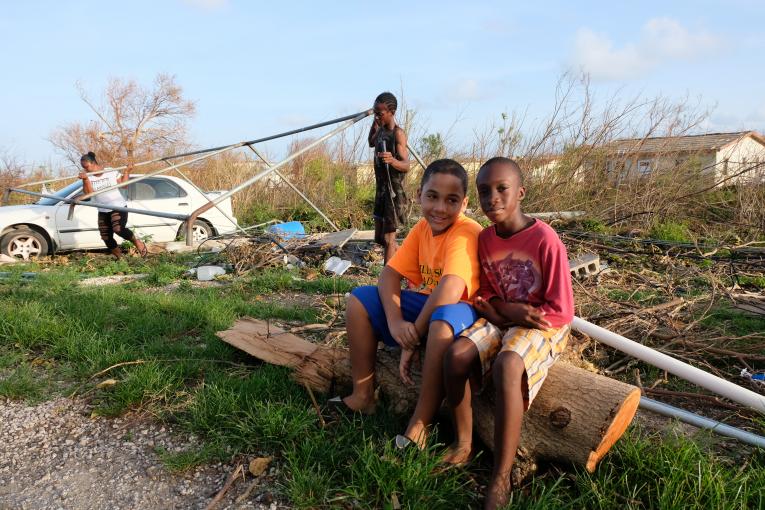CHARLOTTE AMALIE – The Community Foundation of the Virgin Islands (CFVI) and the Caribbean Exploratory Research Center at the University of the Virgin Islands (UVICERC) announce the release of the community needs assessment conducted over the course of 2018 to determine the status of children in the U.S. Virgin Islands following hurricanes Irma and Maria.
The assessment, a project managed through CFVI’s USVI KIDS COUNT Initiative, was specifically intended to elucidate the ongoing health, education, human services, and housing status and needs of children and families in the U.S Virgin Islands during this post-hurricane period.
“This report is a well-researched, non-judgmental analysis of the territory’s current situation as it relates to our children and their families,”
George H. T. Dudley, Chairman of the Board of CFVI, said. “The assessment provides valuable information that I believe can serve as a tool for the entire community, especially for our political leaders, and inform our decision making as we continue to manage the territory’s recovery from the hurricanes and develop plans to strengthen our economy and infrastructure in ways that will benefit the children of our community and serve the needs of their families.”
Recognizing the importance of engaging the community in the effort, the research team at CERC utilized a community-based participatory research (CBPR) approach to accomplish the project objectives: 1) Documentation of the programs and services available in the USVI post Hurricanes Irma and Maria; 2) Documentation of the needs of USVI children and families post Hurricanes Irma and Maria; 3) Documentation of gaps in services (direct and support) post Hurricanes Irma and Maria; 4) Provision of information to support efforts to address service gaps and age-specific post-disaster interventions to enhance recovery and resilience of children and vulnerable families; and, 5) Provision of information to policy makers and other stakeholders addressing needs of children and vulnerable families, particularly in the areas of health, education, human services, and housing.
While key findings are summarized throughout the 200+ pages of the report based on the seven objectives used to guide the development of the community needs assessment, some overarching statements can be made regarding findings that transcended specific objectives. In particular, there was consistent information from both qualitative and quantitative data, as well as primary and secondary data, that stress remains a significant health issue for residents in the Territory in the aftermath of Hurricanes Irma and Maria. This is a reality for both children and adults. Stress emerged as a major challenge for many in the community, including agencies that provide services to vulnerable children and families that are still in the recovery phase and for whom neither the available services nor staffing levels have returned to normalcy.
One year following the historic storms, many children and adults were found to be experiencing symptoms of depression and post-traumatic stress disorder that may be attributable, at least in some part, to their exposure to the traumatic destruction caused by the hurricanes. While this study does not purport to establish cause and effect, evidence from other communities that have had similar experiences suggest a strong link between the experience of going through the hurricanes and negative mental health outcomes.
Program and services gaps in key areas were also noted as needing urgent attention. Key recommendations include:Identify and implement primary and secondary intervention programs to address post-traumatic stress disorder (PTSD) and depression in children and adults at the population level.Recruit professional staff and providers, particularly in the areas of behavioral health, chronic conditions (diabetes and hypertension), and dental care.Fill critical vacancies in the public school system, to include teachers, school nurses and school counselors.Fill key vacancies in both the Head Start (HS) and Early Head Start (EHS) programs to optimize service delivery to HS and EHS children and families.Rebuild/replace the aging housing inventory to ensure hardened structures that better address issues such as accessibility for residents, environmental considerations, energy efficiency, and right-sizing based on smaller family sizes.
Several other points are offered for consideration as important aspects of lessons learned from the needs assessment. These points suggest the overarching need for policy-makers and other leaders to consider how to address key domains of the social determinants of health and how to engage in responsive, realistic, and community-engaged disaster planning for the vulnerable children and families in the community, and the broader community in a collaborative, integrated way.
Ultimately, it is CFVI’s hope that the community needs assessment will facilitate identification of gap areas and priority issues, which will translate into action to address the unmet needs of children and the community, so that stakeholders both within and outside of government can utilize this information to target priority areas for intervention.
The full report can be accessed on CFVI’s website at:https://cfvi.net/about/publications/ or on UVICERC’s microsite at:https://www.uvi.edu/academics/nursing/cerc/CFVI-CERC%20Community%20Needs%20Assessment%20E-Report_February%202019.pdf
Questions or requests for information or should be directed to Anna Wheatley Scarbriel at annas@cfvi.net



